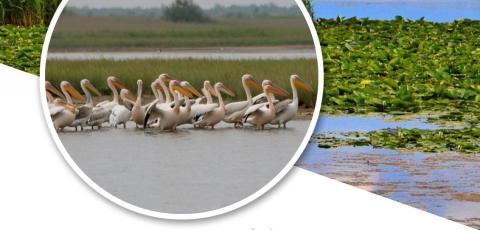Earth observations of ecosystems damage in Ukraine
The seminar addresses the question on how satellite observation technologies and knowledge should be used to detect and monitor the impacts of the war in Ukraine on ecosystems.
The broad objectives of the seminar are to:
- Present available EO approaches/tools/products for detecting impacts in terms of ecosystem extent, condition, and functions.
- Share information on their limitations, and how to combine them with other tools to increase their relevance and efficiency.
- Discuss their application in the context of assessments in Ukraine, including for assessing ecosystem services loss, and proposing mitigation actions.
Programme
Introduction
Welcome and introduction to the Seminar’s objectives (Flore Lafaye de Micheaux, Secretariat of the Convention on Wetlands)
Setting the scene
Ukraine’s nature before and through the war (Nickolai Denisov, Zoï Environmental Network)
Forest ecosystems in Ukraine: an overview (Ekrem Yacizi, FAO)Methodologies and approaches
Monitoring wetland extent, conditions, and functions with remote sensing: opportunities, challenges, and the potential of data integration (Iryna Dronova, University of Berkeley)
Innovative methods for forest disturbance and damage assessment (Andrzej Talarczyk, TAXUS IT)
Case studies
Presentation of environmental assessments of ecosystem damage using remote sensing approaches – case studies in Ukraine
Typology of incidents resulting in environmental damage (Wim Zwijnenburg, PAX)
Dzharylhach National Nature Park (Eoghan Darbyshire, CEOBS)
Ukrainian Wetlands of international importance (Yves Barthelemy, OBSCOM)
Frontlines as proxies for aerial impact (Nickolai Denisov, Zoï Environmental Network)- Panel discussion
Strengths and limitations of Earth observation approaches for assessing ecosystem damage in conflict-prone areas (moderated by Saule Ospanova, OSCE) - Conclusion
